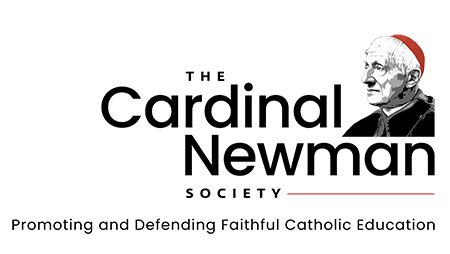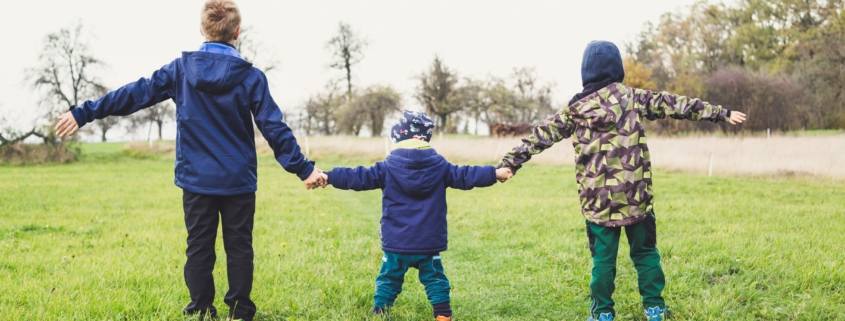Questions and Answers on Christian Anthropology Standards
Editor’s Note: We recently asked the authors, Dr. Joan Kingsland and Dr. Denise Donohue, about the new Standards for Christian Anthropology which were released by Ruah Woods Press and The Cardinal Newman Society.
1. What are the Standards for Christian Anthropology?
“Early in his pontificate St. John Paul II offered what he termed an adequate anthropology through 129 talks given during Wednesday audiences that stretched from 1979-1984. These audiences were then published under the title Man and Woman He Created Them. Commonly referred to as St. John Paul II’s Theology of the Body, these teachings offer a profound vision of the dignity, goodness and worth of the human person. Created in the image of God who is a communion of persons, each person will find fulfillment and happiness, in whatever state of life, through the sincere gift-of-self” (Introduction to Standards for Christian Anthropology, 2020).
These standards, based on St. John Paul II’s Theology of the Body teachings, provide a solid basis for transmitting incrementally, K-8, a vision of the human person according to God’s loving design and St. John Paul’s teachings on the human person.
2. What are some of the key concepts that they try to convey?
“In the area of expectations, it’s important to understand that they do not address matters of sexuality through a “frontal approach”. In fact, these are not standards for teaching sexuality as such. Instead, they go deeper, to the foundations of personal identity. It’s a gamechanger for someone to be deeply convinced of their personal self-worth, dignity and purpose, knowing themselves to be infinitely and unconditionally loved by God and called to live in a communion of persons in his image. This self-knowledge includes respecting and revering oneself, others and above all God. It affects the choices made by young people about how they will treat others and expect others to treat them, including in the area of sexuality. It’s a unique, theological approach to Christian anthropology that lays out the pathway to a happy, deeply fulfilled life” (Introduction to Standards for Christian Anthropology, 2020).
Prominent themes extracted from St. John Paul II’s teachings and reflected in the Standards include: Creation as a Gift, Original Solitude, Original Unity, Original Nakedness, Communion of Persons, Gift-of-Self, Body-Soul Unity, Body Reveals the Person, Historical Man – Fall and Redemption, Purity of Heart/Virtue, Vocation, Eschatological Man – Resurrection.
3. Why did you create the Standards for Christian Anthropology?
The Standards were created to assist educators who choose to use the teachings of St. John Paul on the human person with a format that is familiar to them. Many teachers are familiar with standards as a way to focus curriculum to ensure the presentation of specific content; a pathway of sorts. We wanted to create a familiar pathway for those teachers currently using the Ruah Woods curriculum and for any school that might consider incorporating a K-8 component focused on Christian Anthropology within their current Religion program whether they use the Ruah Woods curriculum or any other curriculum.
4. Are they meant to fill a gap in Catholic education that exists today?
In recent years there’s been a surge in the ever-widening gap between the mainstream take on the identity of the human person versus a Christian vision rooted in Sacred Scriptures. Teachers and administrators of Catholic schools across the nation are finding themselves unprepared for the maelstrom of demands and challenges pressing upon them from students, peers, parents and society at large to accommodate their standards to what in fact would be harmful to the true good of their students.
For instance, the most recent document from the Congregation for Catholic Education, Male and Female He Created Them: Towards a Path of Dialogue on the Question of Gender Theory in Education (2019), addresses the current crisis we are seeing of the practice and discussion among young people of “gender transitioning;” the bifurcation of one’s biological sex from one’s gender. This “phenomenon” often begins with the young person (sometimes as young as toddler age) claiming to identify more closely as a person of the opposite biological sex. Some have treated this psycho-sexual disorder with a “wait and watch” approach which has largely resulted with young people resolving their identity with that of their biological sex. More and more we are seeing a radical advocacy, along with political legislation, which demands a “gender affirmation” approach where those guiding the young person are required by law to agree with the disillusionment of the youth and facilitate the gender transition with behavioral modification (i.e., dressing as someone of the opposite sex or using a name or pro-nouns of the opposite sex), the use of hormone blockers to retard the natural biological sexual development of the young person, and even surgical treatments to reconstruct or remove one’s healthy genitalia. The document was generated to present the Church’s position of this “phenomena” in the much broader context of Christian anthropology and to encourage institutions of higher learning and centers of research to provide professional development and programs for educators to help them understand this phenomena and to assist those to whom it affects. Ruah Woods was ideally positioned to respond to this call.
5. Why is it so appropriate that these standards were completed on the 100th anniversary of Pope St. John Paul II’s birth?
The project was actually started some years back by Ruah Woods. I (Joan) took it on when I began working there early in 2016. I (Denise) joined the effort in June of last year, and we worked toward completion thinking it would be last fall. The project grew, though, from the creation of standards by grade level to that of themes with the inclusion of two additional themes and a glossary. Adjustments were made after reviewer comments all culminating with the conclusion of the document coinciding with St. John Paul II’s 100th birthday. Though it certainly wasn’t planned that we would finish our last edits then, it’s meaningful that a day commemorating the birth of this great saint aligns with the debut of Anthropological Standards based on his teachings. St. John Paul II showed a lot of interest in the youth and spoke to them along the same lines as are found in the Standards.
6. As Catholic educators plan their curriculum for the next academic year and beyond, why should they consider incorporating these standards?
When incorporating these standards beginning in Kindergarten, educators and parents can lay the foundation of concepts and vocabulary that situate man within the rich meaning of an authentic Christian humanity. We have already witnessed how the lives of children and young people are transformed through the assimilation of these teachings. They become convinced of their own self-worth and that of others and their actions begin to show it. They’re kinder and more thoughtful. They become aware of what freedom really means and they become more responsible and focused on achieving what truly brings happiness. It’s heartening to think of the good that can come through the diffusion of these Standards.
7. How do the Standards work together with the Newman Society’s “Catholic Curriculum Standards”?
The Standards for Christian Anthropology complement the Catholic Curriculum Standards published by The Cardinal Newman Society, which cover English language arts, history, scientific topics, and mathematics. The Standards for Christian Anthropology situate the person in proper context as son or daughter of God, heir to the Eternal Kingdom, and brother or sister to all. Anthony Esolen, Catholic writer and social commentator, said, “If you don’t get man right, you don’t get education right.” The Standards for Christian Anthropology lay the groundwork of “getting man right,” a foundation for other subject areas.
8. What’s your hope for young people who are formed by an education that incorporates these standards?
(Answered in 4 above). Two high school students who had only been studying Christian Anthropology for one semester were brought in to give their testimony at a Christian Anthropology in-service for 200 Catholic teachers. The exit survey said it all: overwhelmingly, the witness of these two young people was the highlight for the teachers. These two young people were articulate, confident and optimistic about their futures. They knew who they were as human persons and what makes for happiness. That’s the sort of thing we expect of young people who are being educated in light of the Standards for Christian Anthropology.
9. Anything else you’d like to add?
We would like to add that even though these standards were created based on the completed work of Ruah Woods, they were designed with the intention of providing guidelines for publishers and the writing of other programs. Existing programs might find their curricula already aligns to the Standards, or that this would be possible with minor modifications. It is a framework that we hope will complement already solid religious education standards chosen by Catholic schools.
These Standards are meant to inspire programs that will be transformational, that will touch the hearts of young people and help them form deep convictions about who they are, their self-worth and dignity and that of others. Knowing that they are created in the image of the Triune God and are called to live in communion, they are convinced as well that fulfillment comes through the gift-of-self. St. Augustine likens our life to a sailboat saying that we can afford to forget from where the boat set out, but we cannot forget where we are headed!

